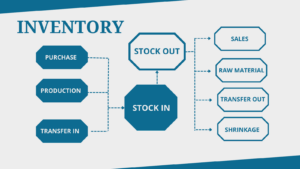In the fast-paced world of jewelry retail, efficient inventory management is crucial for success. Having an organized and effective system in place can save businesses time, money, and effort, ensuring that the right products are always available for customers. One of the most effective tools for achieving this is jewellery stock management software. This technology streamlines the management of jewelry inventory, from tracking stock levels to handling orders and generating reports. It is the backbone of efficient business operations, enabling retailers to keep up with demand and maintain smooth operations.
The Importance of Stock Management in the Jewelry Industry
In any retail business, managing stock efficiently is essential. The jewelry industry, in particular, presents unique challenges when it comes to inventory control. Jewelry items are often small, high-value, and susceptible to theft or loss. Without the right tools, managing inventory can become overwhelming and prone to errors. Jewelry retailers need to ensure they have the right amount of stock on hand, avoid overstocking, and track each item accurately.
Using a stock management system can address these challenges by automating many of the manual processes that traditionally bog down inventory control. This software can help with everything from tracking individual items to generating sales reports, providing a clear overview of stock levels, and even offering alerts when items need to be reordered. A business stock management software solution can integrate with other business tools, such as accounting software and point-of-sale (POS) systems, ensuring seamless data flow between different departments and functions.
Key Features of Jewelry Stock Management Software
1. Real-Time Inventory Tracking
One of the most important features of jewellery stock management software is real-time tracking of stock levels. With this feature, retailers can instantly see how many units of each item are available, preventing stockouts and overstocking. This system provides up-to-date data, so business owners can make informed decisions about reordering and stock allocation.
The ability to track stock in real time means that the system can also provide detailed reports on inventory levels at any given moment. This functionality is particularly useful for jewelry businesses that handle large quantities of small, high-value items, such as rings, necklaces, and bracelets.
2. Barcode Scanning and RFID Integration
Efficiently managing jewelry stock requires quick and accurate identification of items. Stock management software often includes barcode scanning and RFID (Radio Frequency Identification) integration, which allows businesses to track and manage their inventory more effectively.
By attaching barcodes or RFID tags to each piece of jewelry, retailers can easily scan items in and out of stock, update inventory counts, and track items as they move through the supply chain. This eliminates the need for manual counting and reduces the risk of human error.
3. Automated Stock Replenishment
To avoid stockouts, retailers need to reorder products regularly. Jewelry stock management software can automate this process by setting reorder points for each item. When stock levels drop below a certain threshold, the system can generate a purchase order to replenish inventory automatically.
This feature helps prevent disruptions in the sales process and ensures that jewelry stores always have popular items in stock, keeping customers satisfied and preventing lost sales opportunities.
4. Order Management and Tracking
A good stock management system will also include robust order management features. These allow retailers to track customer orders, manage backorders, and ensure that the correct products are shipped on time.
With integrated order management, the software can update stock levels automatically as orders are fulfilled, ensuring accurate inventory counts. Additionally, businesses can track the status of orders and send notifications to customers regarding their delivery progress.
5. Reporting and Analytics
Jewelry retailers need access to detailed reports to understand their inventory’s performance. Jewelry stock management software typically includes built-in reporting tools that offer insights into stock movement, sales trends, and stock levels.
These reports help businesses make data-driven decisions about purchasing, pricing, and promotions. By analyzing trends, retailers can identify which products are performing well and which ones need to be discounted or discontinued.
6. Multi-Store and Multi-Location Support
For jewelry businesses that operate in multiple locations, managing inventory across different stores can be a logistical challenge. A good business stock management software solution will support multi-store functionality, allowing businesses to track stock levels at each location in real time.
This feature provides a comprehensive view of stock across all stores, enabling business owners to make better decisions about stock distribution, transfers, and replenishment. Retailers can also use this feature to ensure that all locations carry the right inventory, reducing the risk of stockouts or overstocking.
How Jewelry Stock Management Software Improves Efficiency
1. Reduces Human Error
Manual inventory management is prone to errors, particularly in the jewelry industry where the inventory consists of small, high-value items. With stock management, the risk of human error is greatly reduced. By automating processes like stock tracking, order management, and replenishment, jewelry businesses can ensure that their inventory counts are accurate and up to date.
This, in turn, helps improve overall efficiency, as employees are less likely to make mistakes when handling stock, and managers can rely on the data provided by the system.
2. Saves Time and Resources
Traditional inventory management requires employees to spend significant time manually counting items, updating records, and reordering products. This can be time-consuming and resource-intensive. By using jewellery stock management software, businesses can automate many of these tasks, freeing up staff to focus on other critical areas, such as customer service and sales.
The software can also help streamline the receiving and shipping processes, ensuring that stock is properly logged when items are delivered or shipped out. This efficiency leads to faster turnaround times and improved overall productivity.
3. Enhances Decision-Making
Accurate, real-time data from the software provides jewelry retailers with the insights they need to make better business decisions. From determining which products to restock to identifying slow-moving items that may need to be discounted, the information provided by a stock management system helps businesses optimize their inventory and improve sales performance.
4. Supports Growth
As jewelry businesses grow, so do their inventory management needs. A robust business stock management software system can scale with the business, ensuring that it can handle increased inventory volumes, additional locations, and more complex operations.
By providing an easy-to-use platform that can accommodate growth, jewelry retailers can stay organized and efficient even as their business expands. This scalability is crucial for businesses looking to grow in a competitive market.
Integration with Other Business Systems
For maximum efficiency, jewelry stock management software should integrate seamlessly with other business systems, such as point-of-sale (POS) systems, accounting software, and customer relationship management (CRM) tools. This integration ensures that all departments are working with the same data, eliminating the need for manual data entry and reducing the risk of errors.
For example, when a sale is made through the POS system, the stock management software will automatically update inventory levels in real time. Similarly, financial data can be synced between the inventory system and accounting software, ensuring that financial reports are accurate and up to date.
Why Choose a Retail Stock Management System?
In conclusion, investing in a retail stock management system is a smart decision for jewelry businesses looking to improve inventory control, streamline operations, and enhance efficiency. Whether you’re a small jewelry retailer or a large enterprise with multiple locations, implementing jewelry stock management software can help you stay on top of your inventory, avoid costly mistakes, and drive business success.
By automating key processes such as stock tracking, order management, and replenishment, jewelry retailers can save time, reduce errors, and make more informed decisions. With the right software in place, businesses can easily manage their stock, track sales trends, and ensure that their customers always have access to the products they need.
As jewelry retailers continue to face new challenges and opportunities, having the right tools to manage inventory effectively is more important than ever. With a jewellery stock management software solution in place, your business can stay ahead of the competition and ensure long-term success in an increasingly fast-paced retail environment.
By choosing the right retail stock management system, you can ensure that your jewelry business remains organized, efficient, and ready for growth.













